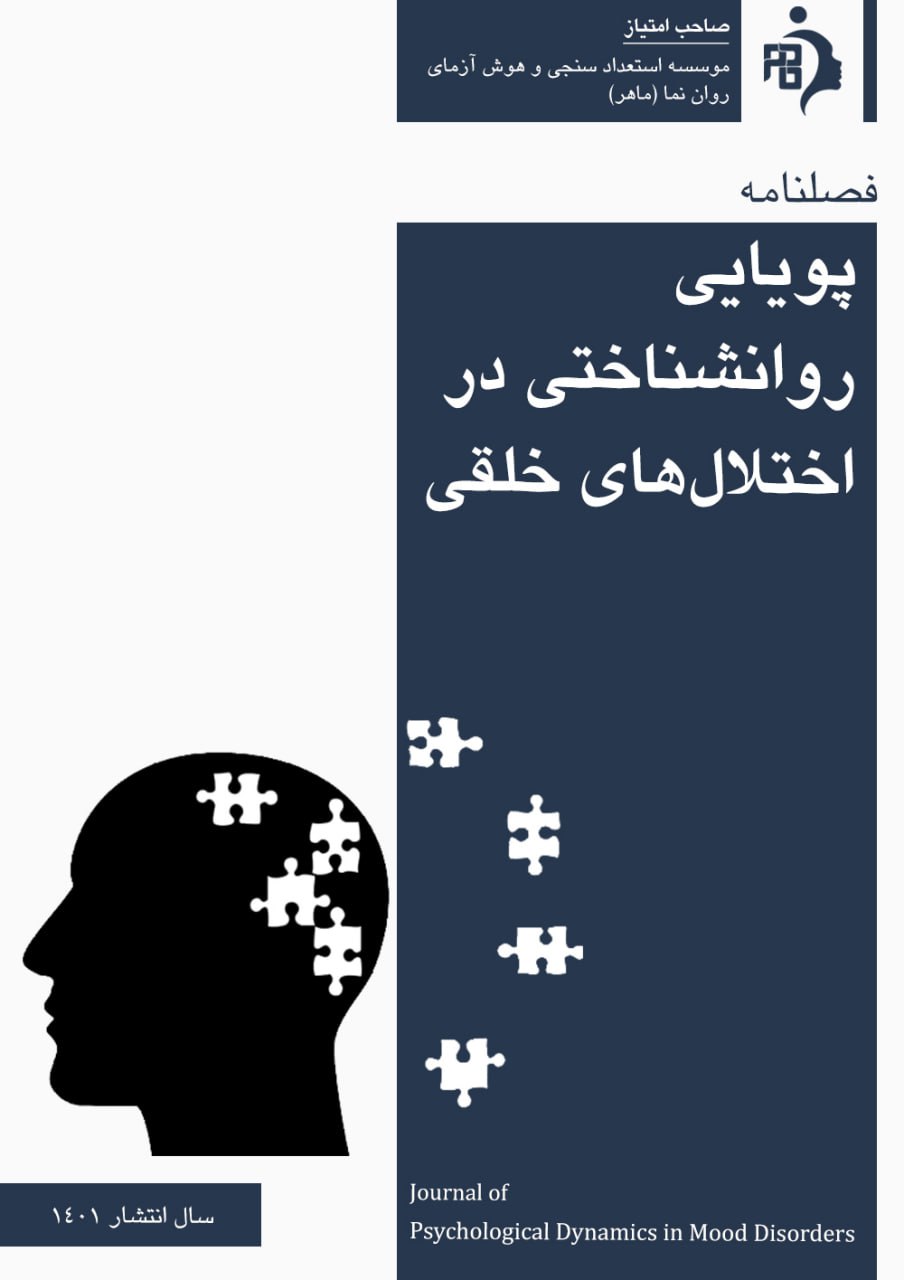بررسی نقش سبکهای دلبستگی و ترومای کودکی در پیشبینی گرایش به مصرف دخانیات با نقش میانجی سازمان شخصیت
کلمات کلیدی:
سبک دلبستگی, ترومای کودکی, سازمان شخصیت, گرایش به مصرف دخانیاتچکیده
هدف: هدف پژوهش حاضر بررسی نقش سبکهای دلبستگی و ترومای کودکی در پیشبینی گرایش به مصرف دخانیات با تأکید بر نقش میانجی سازمان شخصیت در بین دانشجویان و بزرگسالان جوان بود. روششناسی: پژوهش حاضر از نوع توصیفی-همبستگی بود. جامعه آماری شامل دانشجویان و بزرگسالان ۱۸ تا ۳۰ ساله مصرفکننده دخانیات در شهر تهران در سال ۱۴۰۴ بود. نمونهای ۲۰۰ نفره به روش در دسترس انتخاب شد. ابزارهای پژوهش شامل پرسشنامه ترومای کودکی (CTQ)، پرسشنامه سبکهای دلبستگی بزرگسالان و پرسشنامه سازمان شخصیت بود. دادهها با استفاده از شاخصهای آمار توصیفی، آزمون همبستگی پیرسون و تحلیل مسیر در نرمافزارهای SPSS نسخه ۲۶ و AMOS نسخه ۲۴ تحلیل شدند. یافتهها: نتایج نشان داد ترومای کودکی (β=0.34)، دلبستگی اجتنابی (β=0.21) و دلبستگی مضطرب (β=0.28) اثر مستقیم مثبت و معناداری بر گرایش به مصرف دخانیات دارند، در حالیکه دلبستگی ایمن (β=−0.23) و سازمان شخصیت (β=−0.35) اثر مستقیم منفی و معناداری بر آن داشتند. همچنین، ترومای کودکی و سبکهای دلبستگی ناایمن از طریق کاهش سازمان شخصیت بهطور غیرمستقیم گرایش به مصرف دخانیات را پیشبینی کردند. شاخصهای برازش مدل نیز مناسب بود (χ²/df=1.71، RMSEA=0.054، CFI=0.95). نتیجهگیری: یافتهها نشان میدهند که تجارب آسیبزای کودکی و سبکهای دلبستگی ناایمن میتوانند از طریق تضعیف سازمان شخصیت، خطر گرایش به مصرف دخانیات را افزایش دهند، در حالیکه سبک دلبستگی ایمن و سازمان شخصیت منسجم نقش محافظتی ایفا میکنند. تقویت انسجام شخصیت و ارتقای سبکهای دلبستگی ایمن میتواند به عنوان اهداف کلیدی در برنامههای پیشگیری و درمان اعتیاد به دخانیات مدنظر قرار گیرد.
دانلودها
مراجع
Aminzadeh, M., & Shah-Hosseini, M. (2019). Examining the relationship between childhood trauma and attachment styles with personality disorders in adolescents. Journal of Clinical Psychology, 24(3), 256-270. https://cwfs.ihu.ac.ir/article_201605.html
Burgkart, P. L. (2022). Attachment styles, personality organization, and emotional functioning after childhood trauma. Frontiers in Psychiatry. https://www.frontiersin.org/articles/10.3389/fpsyt.2021.786045/full
Clarkin, J. F., Yeomans, F. E., & Kernberg, O. F. (2020). Psychotherapy for borderline personality: Focusing on object relations. American Psychiatric Publishing. https://psychiatryonline.org/doi/full/10.1176/ajp.2006.163.5.944
Crittenden, P. M., & Landini, A. (2011). Assessing adult attachment: A dynamic approach. W. W. Norton & Company. https://ojs.interpersonajournal.com/index.php/ojs/article/view/300
de With, J. (2024). The association between childhood trauma and tobacco smoking in patients with psychosis. European Archives of Psychiatry and Clinical Neuroscience. https://doi.org/10.1007/s00406-023-01754-z
Duncan, J. (2024). The effects of childhood trauma and attachment on leadership styles in adults [Doctoral dissertation]. https://search.proquest.com/openview/94b865ae7e5d67ecfbb9fe4fa858c418/1?pq-origsite=gscholar&cbl=18750&diss=y
Duncan, J. S. (2024). Childhood trauma, attachment, and adult leadership styles. https://search.proquest.com/openview/94b865ae7e5d67ecfbb9fe4fa858c418/1?pq-origsite=gscholar&cbl=18750&diss=y
Fuchshuber, J. (2020a). Childhood trauma, personality, and substance use disorder. Frontiers in Psychiatry. https://doi.org/10.3389/fpsyt.2020.00531
Fuchshuber, J. (2020b). Childhood trauma, personality, and substance use disorder: The development of a neuropsychoanalytic addiction model. Frontiers in Psychiatry. https://doi.org/10.3389/fpsyt.2020.00531
Gerra, M. L. (2021). Early parent-child interactions and substance use disorder. Psychiatry research. https://pubmed.ncbi.nlm.nih.gov/34606823/
Karami, S., & Rezaei, M. (2020). The impact of attachment styles on substance use in adolescents. Quarterly Journal of Educational Psychology, 42(4), 310-325. https://elmnet.ir/article/21177163-39722
Kernberg, O. F. (2016). The treatment of patients with borderline personality disorder. American Journal of Psychotherapy. https://www.ofhills.com/wneip_scholars_character_course/Character_Fall_2013/01%20Week%20One/The%20Treatment%20of%20Patients%20with%20Borderline%20Personality%20Organization.pdf
Kianfarid, G., Sedaghat, N., & Jafari, S. (2023). Examining the effectiveness of intensive short-term psychodynamic psychotherapy on self-esteem and aggression in opioid addicts. Proceedings of the First International Conference on Psychology, Social Sciences, Educational Sciences, and Philosophy, Babol, https://civilica.com/doc/1698571
Lewis, A. J. (2020). Editorial: Addiction and attachment. Frontiers in Psychiatry. https://doi.org/10.3389/fpsyt.2020.612044
Macklem, G. L. (2015). Practitioner's guide to emotion regulation in school-aged children. Springer. https://books.google.com/books?hl=fa&lr=&id=ASn6t2-TH88C&oi=fnd&pg=PR3&dq=Practitioner%27s+guide+to+emotion+regulation+in+school-aged+children&ots=50njARmGFD&sig=PeK_9XBNvvNwKHrM4zkYcIKxMWU
Mohammadpour, M., & Khani, Z. (2022). The relationship between personality organization and attachment styles with tobacco use in adults. Journal of Clinical Psychology, 27(1), 234-247. https://sid.ir/paper/83101/fa
Nakhoul, L. (2020). Attachment style and addictions (alcohol, cigarette, waterpipe): A study among Lebanese adolescents. BMC psychology. https://doi.org/10.1186/s40359-020-00404-6
Rafiei, M., Salehi, A., Yousefi, T., Samadi, S., & Jafari, S. (2022). The effectiveness of emotion-focused and intensive short-term psychodynamic therapy on personality organization and ego strength in individuals with tension-type headaches. Journal of Mashhad University of Medical Sciences, 65(6). https://mjms.mums.ac.ir/article_23688.html
Schindler, A., & Bröning, S. (2014). A review on attachment and adolescent substance abuse: Empirical evidence and implications for prevention and treatment. Substance Abuse. https://doi.org/10.1080/08897077.2014.983586
Topchoglu, M. (2024). The relationship between childhood trauma, attachment styles, and substance use in adults. Journal of Clinical Psychology, 61(4), 339-344. https://cwfs.ihu.ac.ir/article_201605_fce64ebed2ed984014c12fdfe09eb344.pdf
Turliuc, M. N. (2024). The relationship between insecure attachment and nicotine dependence: The mediating role of emotion dysregulation. Frontiers in Psychiatry. https://link.springer.com/article/10.1186/s13011-024-00623-9
Yilmaz, H. (2022). The impact of traumatic experiences on attachment styles in adults. Journal of Clinical Psychology, 38(3), 489-500. https://doi.org/10.6018/analesps.489601
Yilmaz, H., Arslan, C., & Arslan, E. (2022). The effect of traumatic experiences on attachment styles. Anales de Psicología/Annals of Psychology, 38(3), 489-498. https://revistas.um.es/analesps/article/view/489601
دانلود
چاپ شده
ارسال
بازنگری
پذیرش
شماره
نوع مقاله
مجوز
حق نشر 2025 محبوبه داودآبادی فراهانی, علیرضا آهنگران, فاطمه مسعودی¬بیدگلی, هانیه افضلی¬نژاد (Author); نازنین حقیقت¬بیان (Translator); سهیل جعفری (Author)

این پروژه تحت مجوز بین المللی Creative Commons Attribution-NonCommercial 4.0 می باشد.









